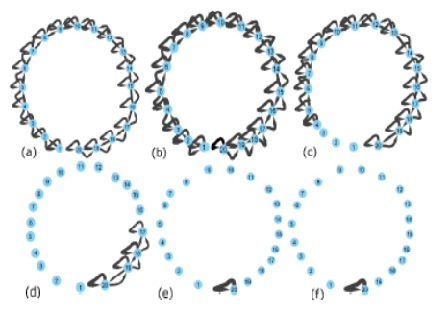


Indian Journal of Science and Technology
DOI: 10.17485/IJST/v15i39.1518
Year: 2022, Volume: 15, Issue: 39, Pages: 1971-1977
Original Article
V Vijesh1, K Satheesh Kumar1, M S Swapna2, S Sankararaman3*
1Department of Futures Studies, University of Kerala, Trivandrum, 695581, Kerala, India
2Laboratory for Environmental and Life Sciences, University of Nova Gorica, Vipavska 13,
Nova Gorica, SI-5000, Slovenia
3Department of Optoelectronics, University of Kerala, Trivandrum, 695581, Kerala, India
*Corresponding Author
Email: [email protected]
Received Date:21 July 2022, Accepted Date:19 September 2022, Published Date:15 October 2022
Objective: To delineate a novel surrogate approach to analyse the ripple component by constructing a complex network using the Markov model. Methods: Adjacency matrices (A) are constructed from the digital storage oscilloscope output signal of the Full-Wave (FWR) and Half-Wave Rectifiers (HWR) without and with a filter. The centrality measures - indegree, outdegree, in closeness, out closeness, Weighted Network Clustering Coefficient (WNCC) – are also computed for the Markov chain. Findings: With the increase of filter capacitance, more elements in the adjacency matrix become zero. Finally, only one matrix element corresponding to A10;10 remains nonzero for FWR and A20;20 for HWR, indicating the total rectification of the signal at 10 volts. The Markov chain analysis shows that as the ripple component decreases, the number of unconnected nodes increases and the self-loop of the last node increases. For the rectifier output without filtering, it is found that all the nodes are interconnected through edges. The greater the filtering efficiency, the greater the indegree and outdegree, and the lesser the incloseness, outcloseness and WNCC measures.
Keywords: Complex network; Markov chain; Rectifier; Time series; Ripple
© 2022 Vijesh et al. This is an open-access article distributed under the terms of the Creative Commons Attribution License, which permits unrestricted use, distribution, and reproduction in any medium, provided the original author and source are credited. Published By Indian Society for Education and Environment (iSee)
Subscribe now for latest articles and news.